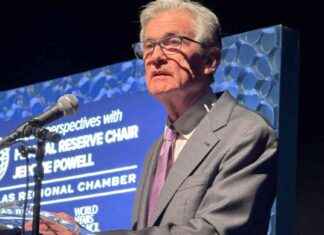U.S. employers stepped up hiring last month, adding a healthy 227,000 jobs, and more Americans began looking for work, a sign that President Donald Trump has inherited a robust job market.
January’s job gain was the best since September, and it exceeded last year’s average monthly gain of 187,000, the Labor Department said Friday.
The unemployment rate ticked up to a still-low 4.8 percent from 4.7 percent in December. But the rate rose for an encouraging reason: More Americans started looking for work, though not all of them found jobs immediately. The proportion of adults who are either working or looking for work reached its highest point since September.
Yet some of the economy’s softness remains: Average hourly wages — a weak spot since the Great Recession ended 7½ years ago — barely rose last month. And the number of people working part time who would prefer full-time work rose.
January’s jobs figures reflect hiring that occurred mainly before Trump was inaugurated on Jan. 20. Still, it was the first employment report to be released with Trump occupying the White House, and he seems sure to take a close interest in it.
As a candidate, Trump frequently argued that the government’s jobs data exaggerated the health of the economy. He called the unemployment rate a "hoax" and said it declined after the recession under President Barack Obama mainly because many Americans stopped working or looking for work.
The biggest factor in that trend has been widespread retirements by the vast generation of baby boomers. But in addition, many Americans of working age, particularly men with no more than a high school degree, have also stopped looking for work.
January’s solid job gain coincides with other data suggesting that the economy might be picking up after a sluggish 2016. Consumers are more confident and spending more, manufacturers are producing more goods and home sales stand at mostly healthy levels.
The rise in part-time work lifted an alternative gauge of unemployment — one that also includes involuntary part-time workers and people no longer looking for work — from 9.2 percent to 9.4 percent.
Last month’s hiring ranged across most industries, and in some cases the gains might have reflected weather and other seasonal quirks. Construction companies, for example, added 36,000 jobs, the most since March. That figure might have been boosted by unseasonably warm weather in the Northeast.
Manufacturing added 5,000 jobs, its second straight gain after a string of losses in the fall.
Retailers generated 46,000 more jobs, the sharpest monthly gain in nearly a year. But that increase likely reflected imperfections in the government’s seasonal adjustment process, which tries to filter out the hiring and subsequent layoff of temporary retail workers over the winter holidays. Excluding seasonal adjustments, retailers shed jobs last month, as they do nearly every January.
The proportion of Americans who were either working or looking for work in January rose to 62.9 percent from 62.7 percent in December. Before the recession began in 2007, that figure had been 66 percent.
Measures of business sentiment indicate that many employers have adopted a more positive outlook since Trump’s election victory in November. The president’s promised tax cuts, deregulation and infrastructure spending have increased optimism that the economy’s sluggish pace of growth will pick up.
The National Federation of Independent Business said its measure of small business optimism soared 38 points in December to its highest level since 2004. And the Conference Board’s consumer confidence index jumped to a 15-year high in December before dipping slightly last month.
The Federal Reserve has taken notice. It inserted a reference to the improved consumer and business outlook in a statement it issued after its policymakers met this week. The Fed left its key interest rate unchanged but struck a slightly more upbeat tone about the economy.
The possibility of further stimulus from tax cuts and infrastructure spending could quicken inflation and lead the Fed to raise rates more rapidly, some economists say.
Joseph LaVorgna, an economist at Deutsche Bank, said he is optimistic that growth will accelerate this year, in part because of Trump’s policies. But when it comes to additional hiring as a result of those policies, that is more likely to appear later this year, once faster growth is apparent.
American factories expanded last month at their fastest pace in more than two years, according to a private survey of purchasing managers. Production and new orders rose at a healthy pace. And a gauge of hiring suggested that manufacturers may have added jobs at a faster pace in January.
Businesses are also spending more on such high-priced items as industrial machinery, computers and autos, a government report last week showed.
Consumers are showing renewed health, too. They boosted their spending in December by the most in three months.
Associated Press
Our editors found this article on this site using Google and regenerated it for our readers.





